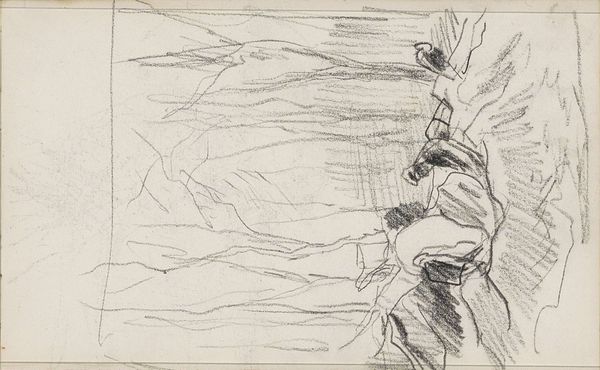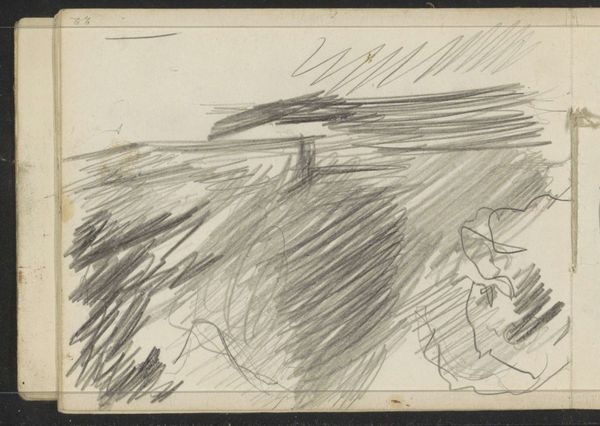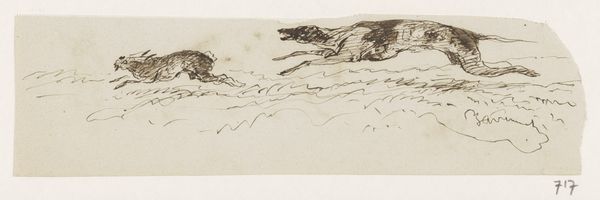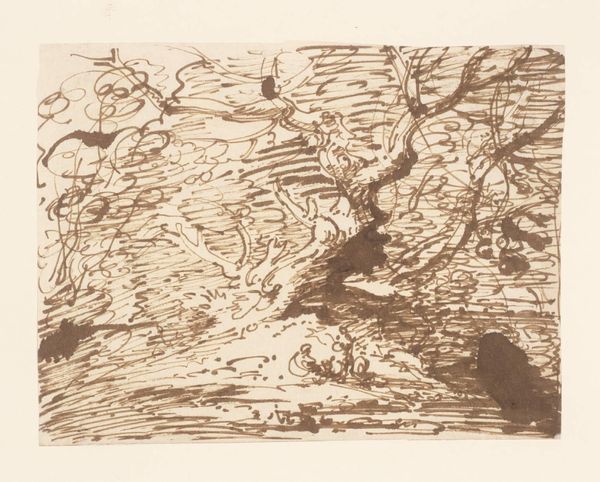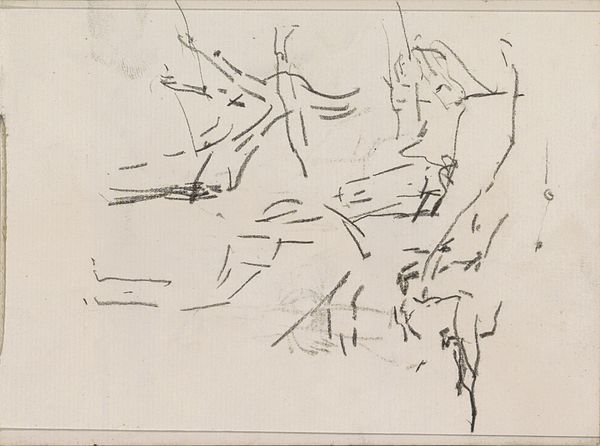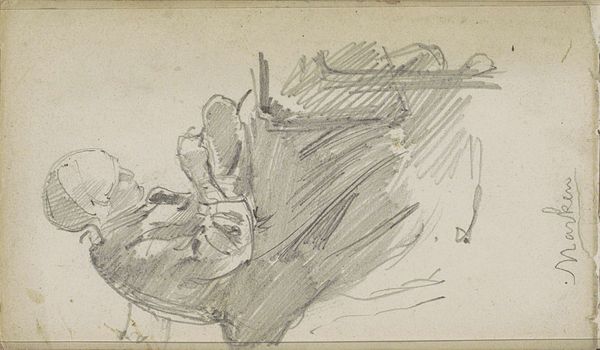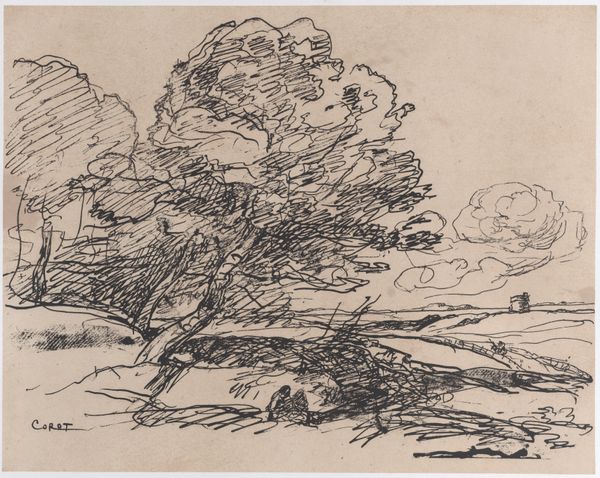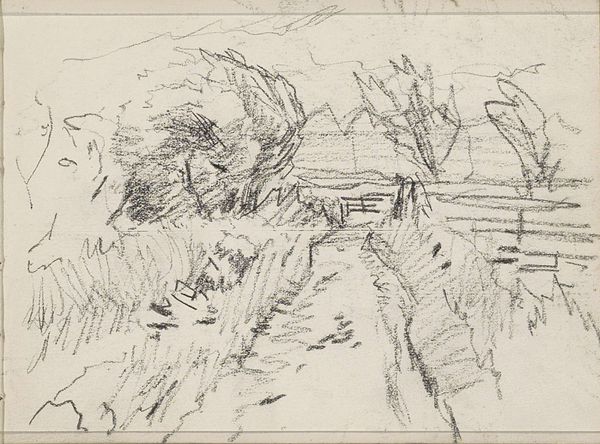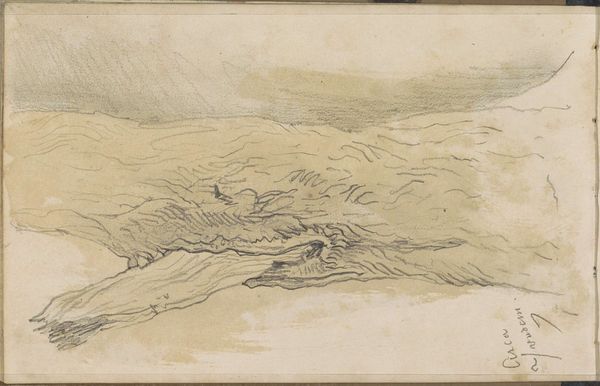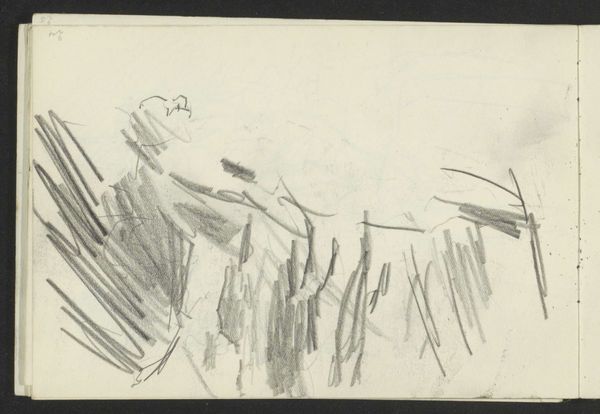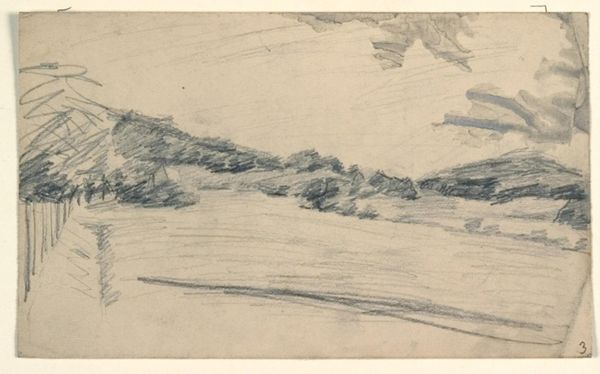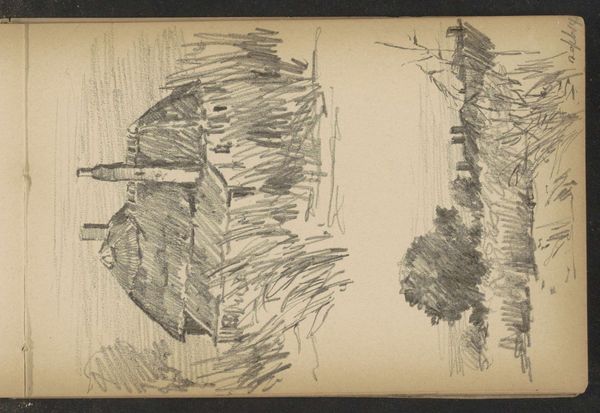
Sydfransk bjerglandskab med bevoksning i forgrunden (nederste halvdel af dobbeltsidet skitse) 1912
0:00
0:00
drawing
#
landscape illustration sketch
#
drawing
#
toned paper
#
ink drawing
#
ink painting
#
pencil sketch
#
incomplete sketchy
#
etching
#
ink drawing experimentation
#
watercolour illustration
#
watercolor
Dimensions: 240 mm (height) x 310 mm (width) (bladmaal)
Editor: This ink drawing by J.A. Jerichau (II) is called *Sydfransk bjerglandskab med bevoksning i forgrunden (nederste halvdel af dobbeltsidet skitse)*, created in 1912. The sketchy quality gives it such an immediate feel, like a glimpse into the artist's process. What can you tell us about the historical context surrounding sketches like this? Curator: Well, consider the rise of plein air painting in the late 19th century. Artists increasingly valued direct engagement with the landscape. This sketch, part of a double-sided sheet, reflects that shift. The "incomplete sketchy" nature points to the value placed on capturing a fleeting moment. Where do you think it was intended to be shown? Editor: Probably nowhere; it looks very personal, like a private exploration. Do you think its creation ties into the art market or exhibitions of the time? Curator: Interesting point! Think about how the art world commodifies even perceived "authenticity." Though appearing spontaneous, this sketch also enters the museum context. How does knowing it’s now in the Statens Museum for Kunst impact our understanding of its value and intended audience? Editor: That’s a good question! Its presence here elevates it, right? The museum display suggests a level of completion or importance beyond its initial private purpose. I suppose every artwork gains new historical relevance with time, and that this work is a symbol of its time as much as it's of today. Curator: Precisely! We impose contemporary frameworks and value systems on art of the past. Thinking about how power and presentation interact—the institutional influence—enhances our experience. Editor: Absolutely! I’ll never see sketches the same way again.
Comments
No comments
Be the first to comment and join the conversation on the ultimate creative platform.
